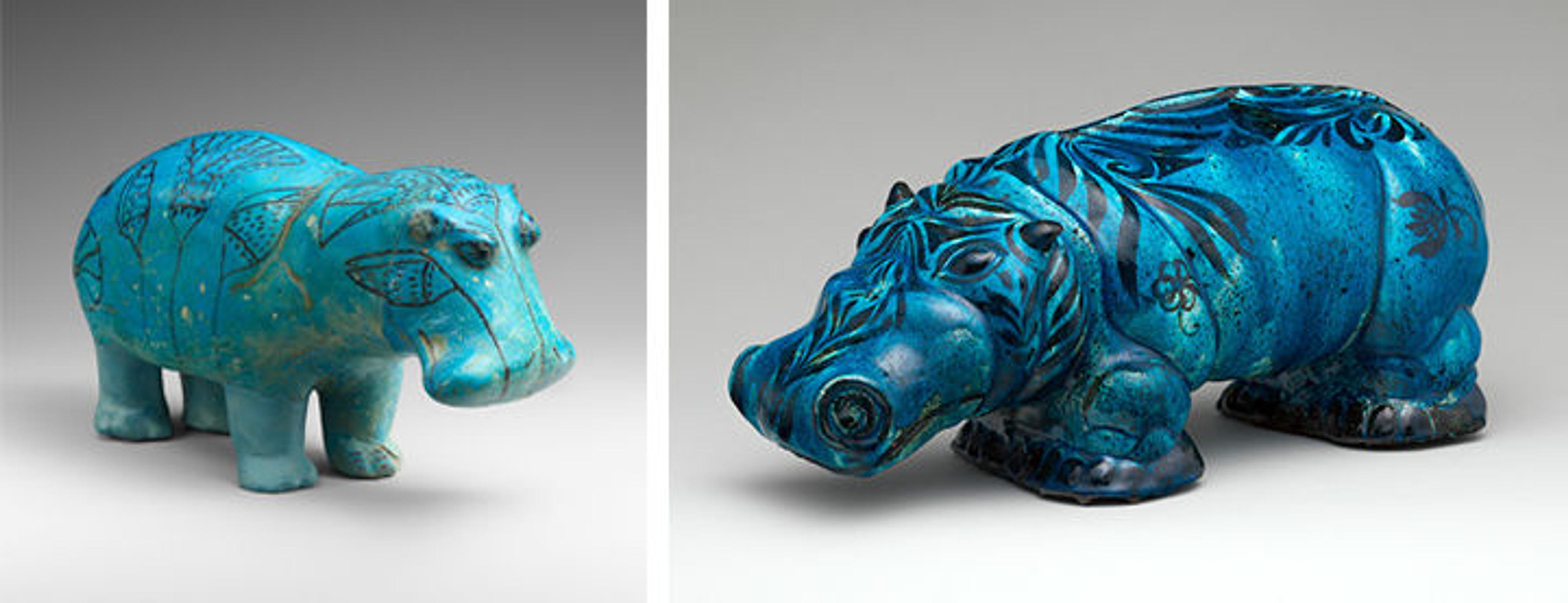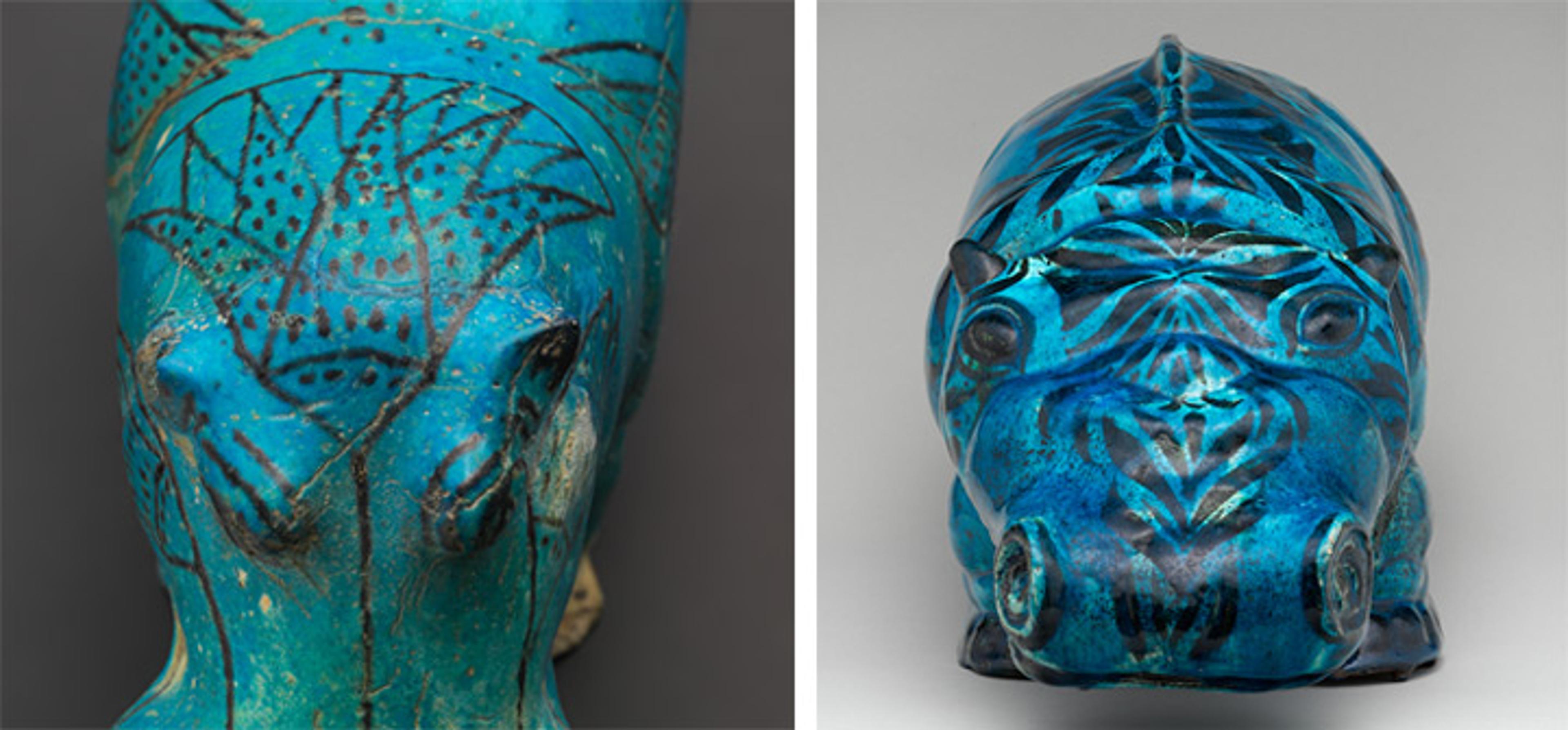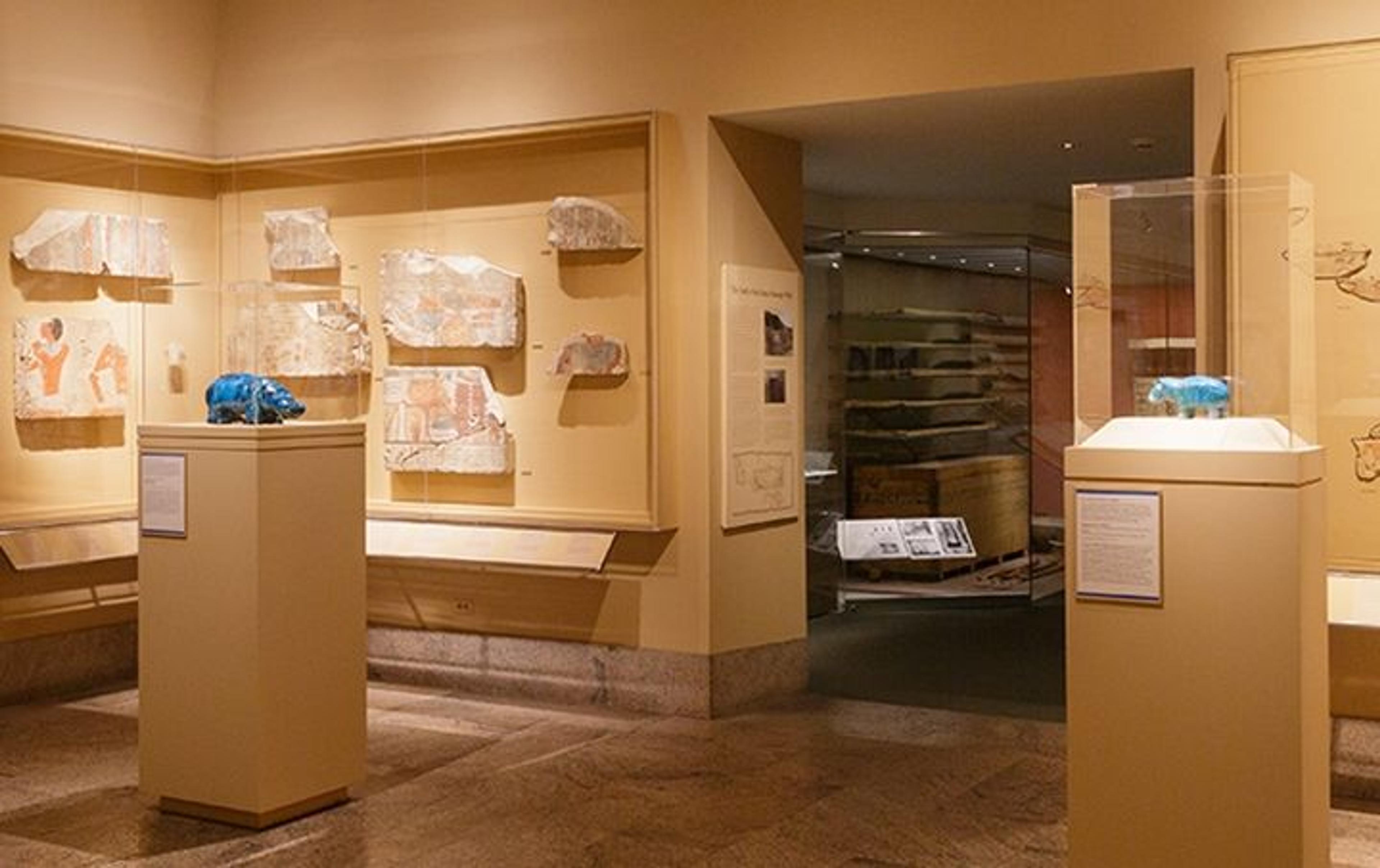Two Blue Hippos

Hippopotamus ("William"), ca. 1961–1878 B.C. From Egypt, Meir, Tomb B3. Faience. L. 7 7/8 x W. 3 x H. 4 1/2 in. (20 x 7.5 x 11.2 cm). The Metropolitan Museum of Art, New York, Gift of Edward S. Harkness, 1917 (17.9.1). Right: Carl Walters (American, 1883–1955). Hippopotamus, 1936. Glazed earthenware. L. 18 1/8 x H 7 3/4 in. (46 x 19.7 cm). The Metropolitan Museum of Art, New York, Purchase, Friends of the American Wing Gift, 2017 (2017.134)
«What inspires you? Do you have a favorite color that has a special meaning to you? For thousands of years, people have been fascinated by artwork made by other people. And artists are often inspired by art from different times, perhaps by something made yesterday, or 50 years ago, or—as in the case of these two hippos—several thousands of years ago!»
The hippopotamus on the left was made in ancient Egypt about 4,000 years ago and the one on the right was created in the United States less than 100 years ago. How are the two hippos the same? And how are they different?
The ancient Egyptian hippo was placed in a tomb. It was thought to magically transfer all its positive powers of life and rejuvenation to the tomb owner, helping him to be reborn. Today this blue hippo is nicknamed William and he is the unofficial mascot of the Museum.

Hippopotamus in Amboseli National Park in Kenya in 2011. Photo by Isabel Stünkel
The color blue was very special for the ancient Egyptians. Real hippos are of course not blue, but mainly grey or brown. Blue was the color of the Nile River, where hippos lived. The Nile was a main source of life for the Egyptians, so among other things this bright blue symbolized life. William is made of faience (fay-AHNCE), a ceramic material that was often produced in a blue or blue green color. Egyptians used a brilliant blue for this hippo and for many other burial objects. Such objects were placed in tombs to magically give life to the deceased.
In 1919—almost 100 years ago—the artist Carl Walters moved to New York City from Portland, Oregon. When he moved, Walters was 34 and made candles for a living. Like many new transplants to the city, Walters came to The Met to look, learn, and be inspired.
During his visits to The Met, Walters became mesmerized by the ancient Egyptian artifacts he saw. He was especially drawn to blue faience (fay-AHNCE) objects, like beads and jewelry. Among the objects likely on view at that time was William the hippo. Walters was determined to reproduce the brilliant blue color. He set out to experiment with clay-making, using the fireplace of his apartment as a kiln! In a little over a year, he successfully produced a glaze (a glassy coating baked onto clay) that had this color. Later in his career, Walters became known for his bold ceramics covered in this bright glaze, which was called "Walters blue." But clearly he was inspired by William and the other objects he found in the galleries during his visits as well.

Left: Detail of open lotus flower on the head of Hippopotamus ("William"), ca. 1961–1878 B.C. Right: Detail of floral scroll design on the head of Carl Walters's Hippopotamus, 1936
Take a look at the decoration of both hippos. William (left) has open lotus flowers and closed lotus buds painted on his body. Lotus flowers close every evening and open again every morning. So ancient Egyptians used lotus flowers to symbolize the eternal cycle of rebirth. Walters's hippo (right) is covered with a wonderful symmetrical scroll design. Thousands of years after William was made in Egypt, the American artist Walters created his own design likely inspired by the one on the ancient hippo.
Sadly we do not know the name of the Egyptian who created William, since artists in ancient Egypt rarely signed their art works. Would he or she ever have imagined that about 4,000 years later somebody would be inspired by their work?

Display of Conversation between Two Hippos, on view in gallery 107
Get inspired! Come visit the Egyptian Art galleries, where both hippos are now on view facing each other. Discover more works of art on #MetKids and let us know what inspires you. Ask an adult to leave a comment below or email a photo of your artwork to metkids@metmuseum.org.
Conversation between Two Hippos is on view from September 12, 2017, through April 1, 2018, in gallery 107.
Find out more about William on #MetKids!
#MetKids is a digital feature made for, with, and by kids. Discover fun facts about works of art, hop in our time machine, watch behind-the-scenes videos, and get ideas for your own creative projects.

Isabel Stünkel
Isabel Stünkel is an associate curator in the Department of Egyptian Art.
Adrienne Spinozzi
Adrienne Spinozzi is Assistant Research Curator in The American Wing.